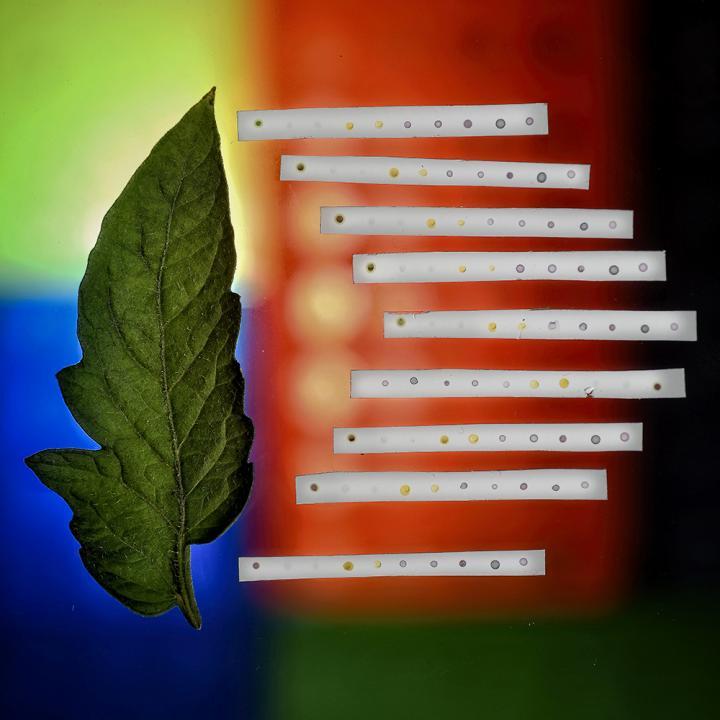As crop plants "breathe" through the pores in their leaves, they release an assortment of volatile organic compounds (VOCs) into the air. A new smartphone-connected device analyzes those chemicals within a matter of minutes, detecting and identifying any diseases that may be indicated.
Although plants always give off VOCs during the regular gas-exchange process, certain types and/or concentrations of the chemicals are associated with specific diseases. That's where the new handheld reader-type gadget comes in. Developed by scientists at North Carolina State University, it's designed to be attached to a farmer's smartphone, sitting over top of its camera lens.
That farmer starts by pulling a leaf off the plant in question, and placing it in a test tube which is subsequently sealed for at least 15 minutes – this gives the leaf a good amount of time to release its VOCs. Next, the tube is uncapped and a thin length of plastic tubing is used to pump the accumulated chemical gases from the test tube into a chamber within the reader.
Inside of that chamber is a strip of test paper, which contains spots of embedded reagents that change color when exposed to certain VOCs. Some of those reagents consist of off-the-shelf dyes, while others incorporate custom-altered gold nanoparticles. The phone's camera images those spots, providing an onscreen display.
Presently, users have to manually interpret the displayed strip's color pattern (pictured below), determining which VOCs are present in the chamber, and in what amounts. Once an accompanying app is developed, however, it will automatically alert users if a disease is indicated, telling them which one it is.

So far, the device has successfully been used to identify 10 different plant VOCs at parts-per-million concentrations. In fact, when tomato plants were inoculated with the late blight pathogen that caused the Irish famine, the reader was able to detect the telltale VOC profile when it was used on the plants just two days later. It should be noted that in order to presently perform such an analysis, plant samples have to be sent off to a lab, where they may wait for days or even weeks before being tested.
"Our technology will help farmers identify diseases more quickly, so they can limit the spread of the disease and related crop damage," says Prof. Jean Ristaino, co-author of a paper on the research. That paper was recently published in the journal Nature Plants.
Earlier this year, some of the same scientists announced a DNA-gathering microneedle patch, that could be pressed against plants' leaves in order to quickly detect diseases.
Source: North Carolina State University via EurekAlert





